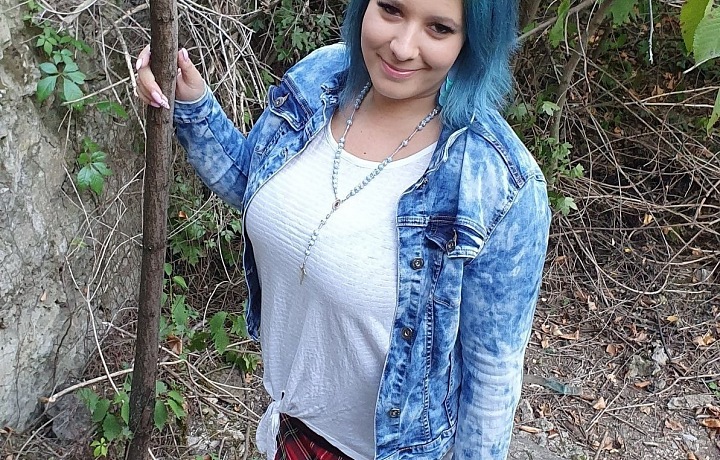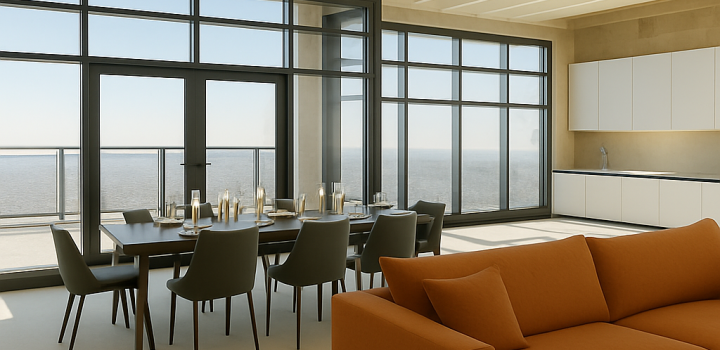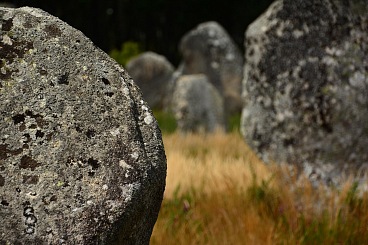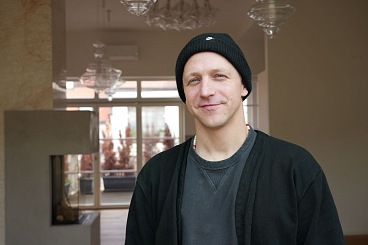Fast confession - Monika Nedvědová: We have picnics in the radioactive zone
Chernobyl. Everyone must have heard that word and has an idea about what happened there and what it meant for humanity. The place has changed a lot in the 33 years since the meltdown at the Chernobyl nuclear power plant. Since the release of the series on HBO, even more people than before have been "flooding" the area. Be it for knowledge, education or just to take a selfie. Monika was so captivated by the place that she cannot stop coming back. She even started an agency that allows others to visit the place too, and see it from a completely different perspective than if they went with one of the "well-known" agencies.
How did it come about, you starting a Chernobyl travel agency?
It came about from regular tourism, I went there as a tourist. It always interested me, over the last ten years I've done nothing but studied materials on it, and such.
Why Chernobyl of all places?
I don't think I have a particular reason, I was fascinated by the tragedy.
How did you learn about it? In school?
I think that I first heard some sort of report on TV. It started to interest me a lot - how, why and what had happened there, the fate of the people that had been there... The final decision was reached when I traveled there as a tourist during a hard time in my life. I told myself that the fates of the people over there will distract me from the reality here, and I just stayed there.
What was happening to you?
It was after a tough breakup.
How old were you?
It was a year and a half ago, I'm twenty-nine now. I haven't been working in Chernobyl for that long. I have a son, so leaving for Chernobyl was a little complicated. He's eight today, that's a different story already, I have more freedom. That's why I decided to go there at the time.
Was it hard to get there? Was there an agency operating there?
There have been a whole range of agencies operating here for the past ten years, so it's not hard to get there. It's rather hard emotionally, every tourist is scared the first time. Whether you know or gather information, the fear is just there. You have to overcome it within yourself and tell yourself to go through with it in spite of all that fear.
What did you see there the first time?
It really affected me back then. The atmosphere. The affected area that's closed off is huge, vacated, it affected over 200 thousand people in the region. It left a huge impact on me and I was really mad that the excursion from the agency that I went with was terribly short. There were too many of us, almost thirty, it was just hopping from car to car, one didn't even have a chance to absorb, know and understand the place. The very moment I was leaving I already knew I was going to come back.
And you did...
I came back in October of last year when I did the first unofficial tour, but I didn't function as an agency yet. I took my friends there and a few random people who joined us. Back then I organized it all myself, I put together the schedule with a local guide who I had been in contact with since my first tour. I was in charge of everything. The agency idea came directly from him, he told me, "you do it differently, you have a different vision, start an agency and bring tourists here so that it's a little different".
How is your vision different?
It's mainly that we go there in small groups, ten people at most, but that's already extreme. We don't do a one-day tour, but two to four days, and we spend all that time in the zone and go through all of it. We try to show more than just what everybody shows, like Pripyat and Chernobyl, so whatever the guides know by heart and go through over and over again. We even go to places where no one else goes, like abandoned villages on the other side of the area which are preserved to this day. I found bills from 1986 there, and photos of people who used to live there.
Does anybody live there now?
There are about eighty inhabitants. It's quite hard to keep track, because those people are 87 years old on average these days, and every two or so months somebody dies, usually. We only find out how many people are there when we go there with humanitarian aid. A mobile store goes there once a month, sells them some groceries, and for the rest of the month nobody cares whether they have bread, water and so on.
And do they? The area is uninhabitable, isn't it?
They're officially there unofficially. They returned after the evacuation, they wanted to stay there. They were removed several times, but they kept coming back.
Why?
We don't have any roots these days, but they have them. Their parents lived there, their grandparents, their great grandparents, it's their home. They don't want to abandon it.
But they don't even have a store there, a school, post office, hospital...
They didn't have anything like that during the war either, they were living in trenches.
What do they do there?
They're completely isolated, they don't do anything. Whoever is able would grow something in a field behind their house, and then try to survive on it all year. They're on their own, abandoned, but they're home. They feel connected to nature there.
Do they have stuff like TV?
Some of them do, most of the houses have electricity, but there's a granny that doesn't even have electricity.
Do they have toilets?
All of them have outhouses, no modern comforts. No shower, no bathroom, nothing.
When you return, you must feel like you're in a different century.
It is all frozen in the year 1986. However it was back then, that's the way it is now.
Why does the government not take care of them, why do humanitarian organizations have to care for them?
When the government allowed them to stay there, they also passed a bill that forbids them from getting help.
Why? Because it's a radioactive area?
Hard to say what the reasoning is. Nobody can tell you why they won't help those people. When you realize what kind of money the zone generates because of tourism... Those aren't small amounts, over the past few years 70 thousand people have been travelling there on average. The permits aren't cheap, sixty percent of the money a tourist pays to any agency goes to the government for the permit. Everything else is the provision to the agency and the cost of accommodation. Nobody knows where the money goes.
When the newly elected President Zelensky who doesn't really understand it well either came there, he fired everyone because nobody could tell him what happens with the money. The zone should be maintained, so that it can be accessible to tourists who won't be in danger because of collapsing buildings. The buildings there should be cleaned up so that there aren't trees growing out of them and so on. Nothing like that is happening there.
So what's the vision for the future?
It's for the money to finally go into that zone. So that it could then improve the living situation of the people who live there too.
So when I come to you and say I want to go to Chernobyl, what are all the things you'll arrange for me?
Everything, including plane tickets.
Where would I stay?
We have houses rented from one of our guides, a few kilometers from the zone. It's a huge advantage, because all agencies start in Kiev. You have to arrive a day prior to the excursion with us.
So I'd fly to Kiev?
Yes, you'd fly to Kiev on your own. The next morning an agency would pick you up and take you to Chernobyl. With a different agency you have a two-day tour, for example, where you've paid to stay in the zone from 9 am to 7 pm, when tourists are allowed in. However, you arrive at the zone at eleven from Kiev, and by the time you get to Pripyat through various checkpoints, it's 1 pm. You only get to enjoy a half of the first day, and same with the second, when the agencies start to leave for Kiev at 5 pm.
The way we do it, all of us fly in together. Naturally, everyone can arrive on their own, then we would pick them up at the airport in Kiev the day before the excursion. We get in a car that we have prepared and leave right for our accommodation, which is located five kilometers from the zone. The next morning we're already standing right in front of the zone at 9 am, before the crowds from Kiev arrive. Everyone says that it's like Wenceslas Square in Pripyat. But when I come to Pripyat, there's not a single soul there. And when we're leaving, we see all those buses.
You have to secure those permits in Pripyat?
No, that's already done at the start in the Dytiatky area, which is the main entry checkpoint. That's where you show permits, passports... There's another checkpoint in a ten kilometer contaminated zone, where everything's repeated. Pripyat has its own entry point too, but there they only count people who are coming in. They note down the car and the number of tourists and no one checks anything else anywhere. The routes require permits and they know exactly where you can go inside the zone.
How big is it?
About the size of Luxembourg, if we're talking size of the zone on Ukrainian soil only. There's another restricted area in Belarus.
But that's under different conditions...
Exactly, different country, different rules.
And you only tour Ukraine?
We go to Belarus too. We'll start doing official excursions there next year.
How much would it cost me?
It depends on the tour. A two-day tour in itself without plane tickets and a hotel costs eight and a half thousand crowns.
Only?
I don't do it as a job, it's not my main sort of income. I have a regular job here, this is more of a calling of sorts.
With good PR it's going to become your principal job soon, and you'll have to raise prices.
I won't have to. I have tours planned for all of next year, I have dates set up and I will not be adding any more.
If I go with you, what will bring me to my knees? What will I take away from it?
Everyone's takeaway is different. I personally love the tourists the most and I'm always happy when there's at least one in a group that approaches me later and tells me that I'd taken them to the very core of the reactor, as you say. That they can feel the fates of the people, have the knowledge and can talk about it at home for weeks.
Do you visit the local people too?
We do, along with the tourists. They're really happy when somebody comes to visit them, when they see someone new and have somebody to talk to. Every time we go there we bring them bread and such. We never come empty-handed. We also have a tour where we have a tourist group that we fly to Chernobyl with and that we then hand over to a guide. I have guides in the zone, local Ukrainians that I've taught Czech. They can walk around with them without the Czech tour being disrupted. My guide follows the group's schedule with them and we go to the grannies, where we meet up with the group in the evening. I just came back from a tour like this. My group was with a guide and we visited two villages, about fifteen grannies, in two cars full of stuff.
You have to speak their language for that.
It's good to speak Ukrainian, I used to learn Ukrainian, so I can communicate with them. It's worse when they speak Russian, but for that I have a guide, who translates from Russian to Ukrainian and vice versa for them, so communication is possible.
The famous series Chernobyl was successful at the Emmy awards. How do you rate it?
It captures the atmosphere of the Soviet Union authentically. The times weren't easy back then, but there are factual errors in it. And quite a number of them. Most people don't even realize, even people who have some knowledge about it will tell you that it's fine, that it's just little things.
But that's not the way it is, for people who were affected by it, even the little things are important. That's how the reality of what happened and how it occurred has been getting altered for years. These days tourists go off what they've read on Wikipedia, not what they see in a documentary. Up to this day I haven't seen a single piece of public domain material or a documentary that'd be one hundred percent true, so that I could say "yes, that is exactly what happened".
Which inaccuracies are those?
In the series it's the story of Vasil Ignatenko, the firefighter and his family. He was on duty that night, he wasn't home. When the power plant exploded, it didn't shake the houses in Pripyat, most people didn't even know about it. It is true that people who lived closer to the power plant heard the explosion, but it wasn't like what was portrayed in the series. People didn't go to a bridge at 2 am to watch the power plant burn. At the time nobody knew about it, the city was sleeping. That personally affects me the most, that the stories of the people aren't genuine. Because I know the mother of that firefighter, I talked to her in Belarus. Over there they, unfortunately, or maybe thank god, don't have the option to watch the series.
Why can't they watch it?
Belarus isn't Ukraine. It's a part of the quote-unquote Russian Federation. These days it isn't the Russian Federation anymore, but it's interesting that the stamp in my passport reads Russian Federation. It's rather interesting, but anyway, they're under the control of Russia.
The zones that are in Belarus are really complicated. The first three are open to tourists, the last one is in a different region. It's closed to tourists and they're starting to resettle it, when it's actually the most contaminated area in all of Belarus. I don't get it, I tried to figure out how it works there, how many people are there, and no one was able to tell me. I told one of the guides to find it out, because I'm curious about it. He told me that it's not possible. A colleague of his was looking into it, and now he's sitting in jail. It just doesn't work this way over there.
Are the rumors about mushrooms growing a meter tall there and other stuff true?
No. You'll find larger mushrooms there, because in most places nobody picks them, so they grow big. They are, however, radioactive, of course. Mushrooms are like sponges, they suck up radioactive isotopes. I always tell tourists that, not to eat the mushrooms, most of all. It's always funny when you then come visit a granny and she offers you soup made from mushrooms she found in the woods behind the house. If you eat three mushroom slices it won't harm you, but it definitely isn't good for regular consumption.
Are people worried about coming back sick and radioactive?
They are. I feel like after the series the European continent is divided into two parts. One wants to go there, the other opposes them and keeps attacking us for taking people there to kill them. The tourism has been going on there for twenty-three years and the zone keeps track of it. The moment somebody came at them saying they've developed cancer after visiting Chernobyl, they'd shut it down immediately. Ukraine operates in accordance with with European standards and the International Institute of Nuclear Energy that allows it to the degree that they do it. It could work the same in here, if, God forbid, Temelín happened to blow up.
In Belarus it's funny, it's some serious punk. Nobody cares what you do there. We had a picnic in the zone by river Pripyat. The background radiation is ten times higher there than it is in Ukraine, but short term exposure is still not dangerous.
Have you ever talked to a doctor about it?
Of course, next month I'm taking a bunch of doctors and radiologists on tour.
What's the name of your agency?
Chernobyl tour.






















